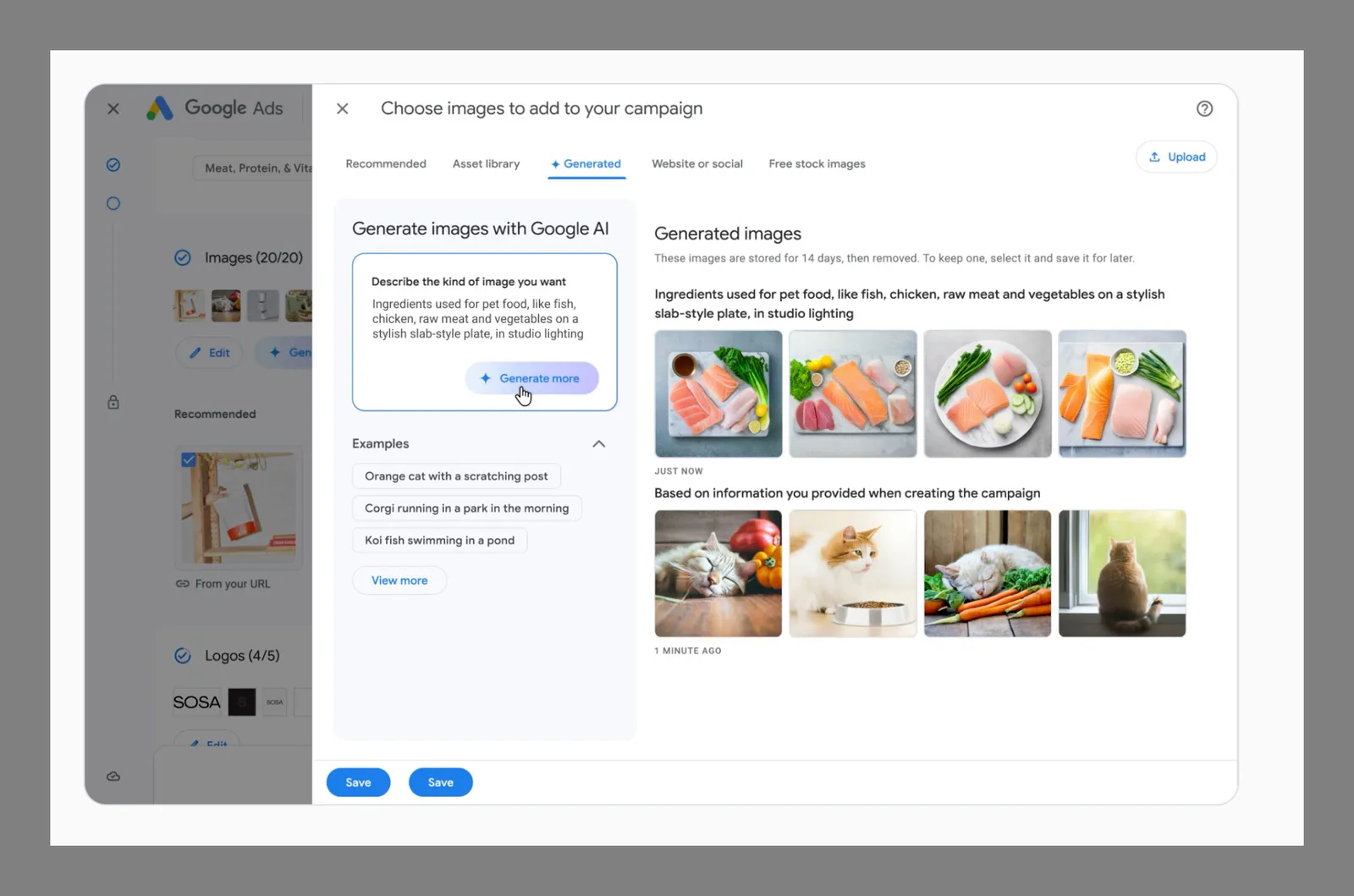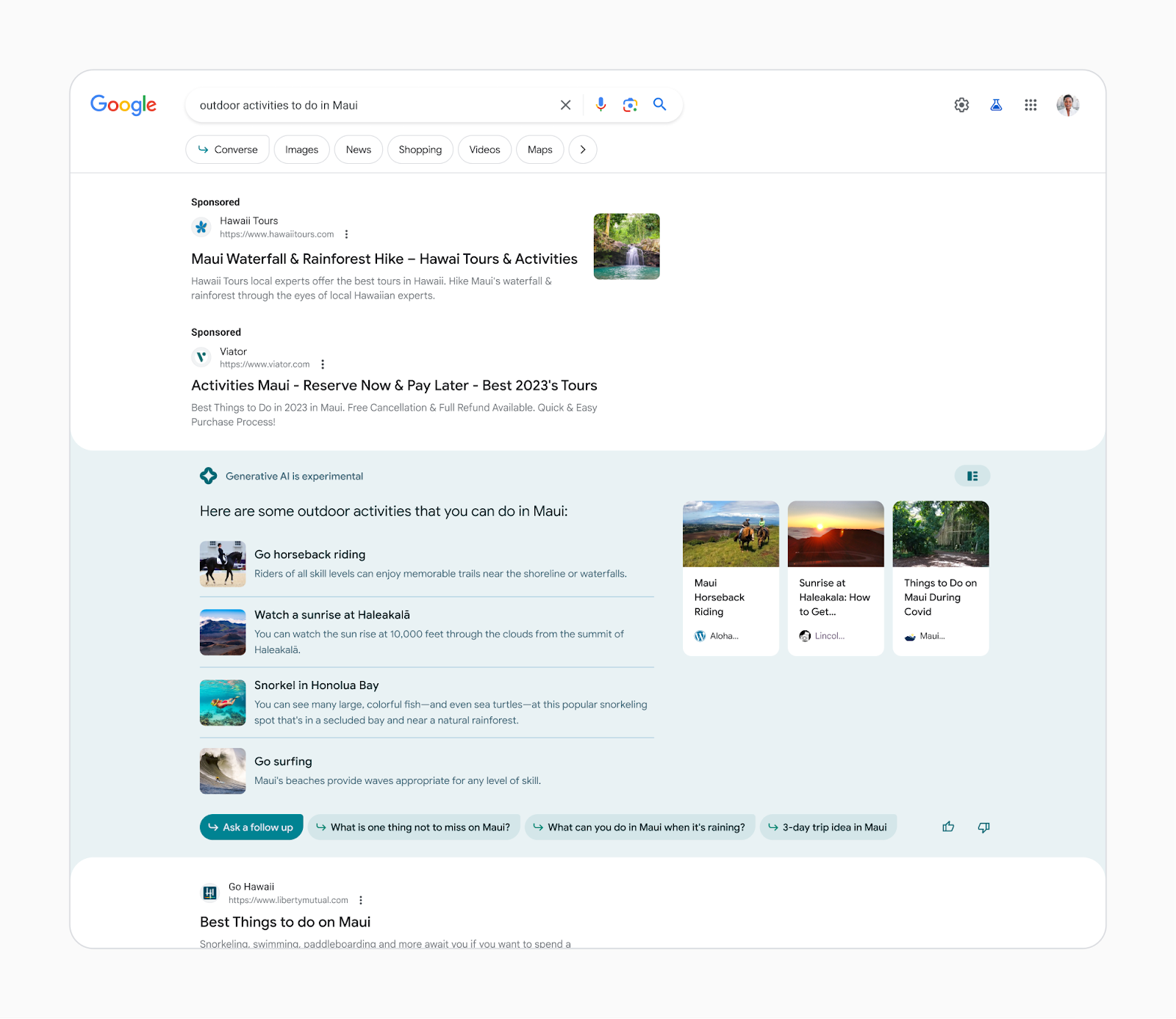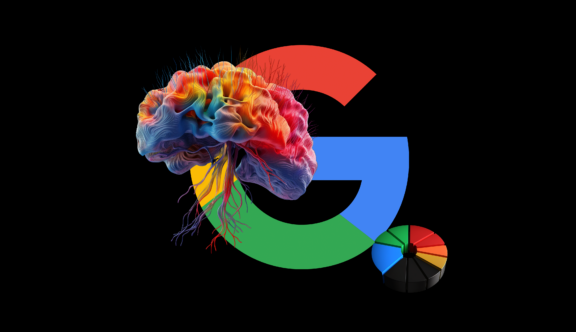It’s that time of the year again for PPCers across the land – Google Ads Marketing Live is here! This is the event of the season for all of those working in paid media; where Google provides the lowdown on their latest rollout of new features across its ad platform.
Missed it? Don’t worry, we’ve distilled the key takeaways and what they could mean to you.
The Power of AI
AI has been the hot topic of 2023, and Google has certainly been focussing on how it can use AI capabilities to improve performance and user efficiency.
For starters, Google will be launching AI tools within its Search and Performance Max products that will make it easier to create new assets.
For example, there’ll be no more running out of ideas about what to include in your headlines and descriptions. Simply ask Google what you’re looking for, what your business is about and the goals you’re looking to achieve, and Google will come back with a multitude of answers. And if you don’t like them – simply tell Google what you don’t like about them and they’ll provide some updated suggestions.

In addition, if imagery and video content is limited for you, AI can help. Either get the system to scour the web for appropriate stock imagery/footage or get it to adapt pre-existing assets to something more suitable for your campaigns.
Oh, and the clever bit – even if your existing assets are of poor quality, AI will work its magic to make them campaign ready. From sorting out blurry backgrounds to adding voice-overs to your video assets, AI can do it all.
What does this mean?
Tools like this will revolutionise everyone’s capacity to produce campaigns fit for purpose across the Google Ad network. Whether you’re new to Google Ads or a veteran, everyone will be able to take advantage of this to create campaigns in a quick and efficient manner.
However, whilst it sounds great, it is likely that these AI tools will still need a bit of educating. Be patient and don’t just settle for the first suggestions it gives you. Test its limits and ensure you give it the capacity to learn from as many signals as possible.
Search Generative Experience (SGE) Ads
The AI news doesn’t just stop there. After Google’s recent announcement that they were aiming to make search results pages more intelligent through the power of AI, advertisers too will be able to take advantage of these AI spaces to showcase their brand and product offering.

Little is known about how this will work, with further development tests still happening with Shopping and Search results, but this could be a game-changer as to how brands start to interact with potential customers in a more personal manner.
What does this mean?
How this will impact both organic and paid listings is a little tricky to say at this stage, but early adopters of this placement could quite possibly gain an advantage over their competitors.
It will be interesting to see how intuitive this will be and how closely it can match relevant products with the user’s initial search intent, but I’m hopeful that this could be a game-changer for search advertisers.
Demand Gen Campaigns
Off the back of the success of its Performance Max product that launched in 2021, Google has announced the rollout of its new Demand Gen campaigns, which will allow advertisers to reach users across its most visual inventory slots – YouTube, Discovery and Gmail.
Like Performance Max, Demand Gen will use AI to determine which users it serves an ad to and what the content of that ad looks like.
What does this mean?
Like P.Max, this is set to be a cheap and cost-effective way for advertisers who are only interested in promoting the visual strengths of their brands.
How well this will perform and complement with P.Max is yet to be seen, but the rollout of this new campaign type is imminent with some lucky advertisers getting access to this within the next fortnight.
Navigation
If you’ve just got your head around how the Google Ads interface works, then I’ve got bad news – it’s changing. The whole platform is getting a UI facelift which will attempt to streamline how advertisers work within the platform and will aim to limit the number of steps required to carry out the most basic of tasks.
What does this mean?
The change may take a little getting used to but in theory, it should make your life a bit easier. Whether that’s the case, only time will tell.
Measurement
As part of Google’s move to GA4 and the continued demise of cookies, Google is making it easier for you to use first-party data in more meaningful ways. It’s simplifying how you access first-party data within the Google Ads interface with the launch of its Ad Data Hub which will allow advertisers to extract insights and trends of different customer sets.
Plus, Google will be rolling out new audience creation features in GA4 to make it easier to create custom audiences going forwards.
What does this mean?
Getting close to your CRM team has never been more important. Advertisers that take full advantage of first-party data will come to stand well ahead of their competition going forwards. Now that Google is making it easier to link your CRM data with your Google Ads account, there really isn’t any excuse to not be using it.
Whilst all of these new features sound really exciting, we completely understand that they can often be quite daunting. If you have any questions on what this means for you, or you’re interested in getting started on any of the above, then our Paid Media team is here to help.
